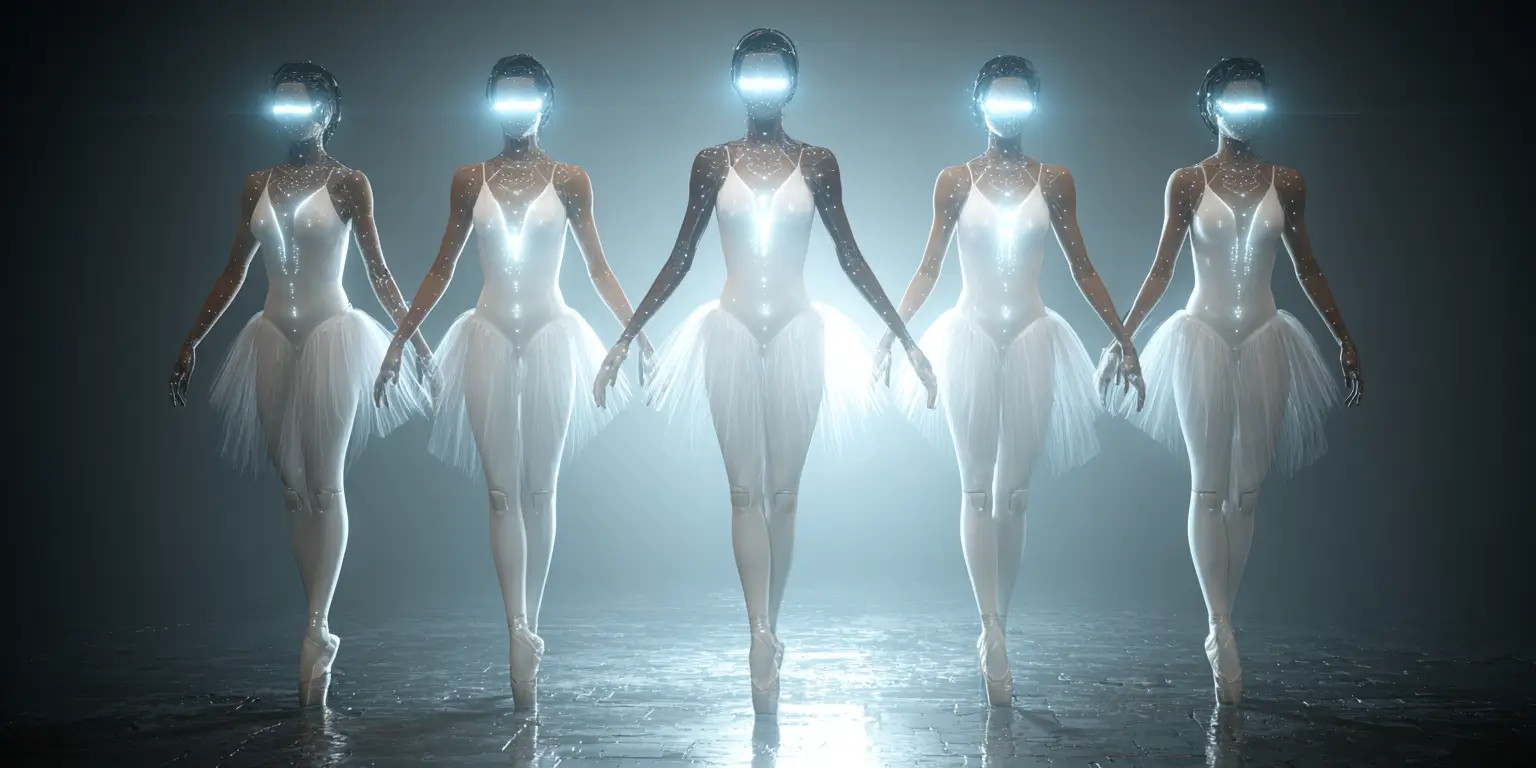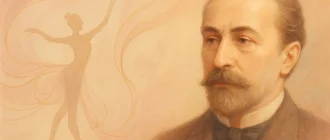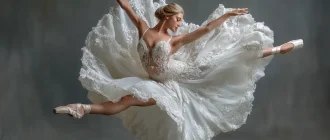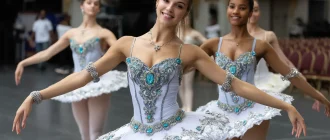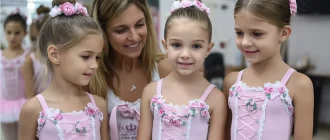Curious about how AI is shaping the future of ballet? The development of artificial intelligence is transforming the dance world by augmenting human creativity and enhancing its potential. Artificial intelligence is the driving technology behind these innovative changes, enabling new forms of creative expression and collaboration in dance. In this article, we’ll begin our exploration of AI-driven choreography, new performance techniques, and the ethical challenges ahead. Dive into the AI Ballet future and discover how technology is transforming this art form.
Key Takeaways
- AI ballet combines technology and artistry, enabling innovative choreography that expands creative horizons and enhances the emotional depth of performances.
- The integration of VR and AR technologies transforms audience engagement, creating immersive experiences that enhance the overall performance and connection to the dance.
- Predictive analytics in AI ballet can forecast emerging dance trends and enhance digital interactions, providing scientific insights that help solve real-world challenges in choreography and audience engagement.
- Ethical concerns regarding ownership and data consent arise with the use of AI in ballet, prompting a need for responsible practices that preserve artistic integrity and cultural expression.
AI Ballet Future Podcast
The Dawn of AI Ballet
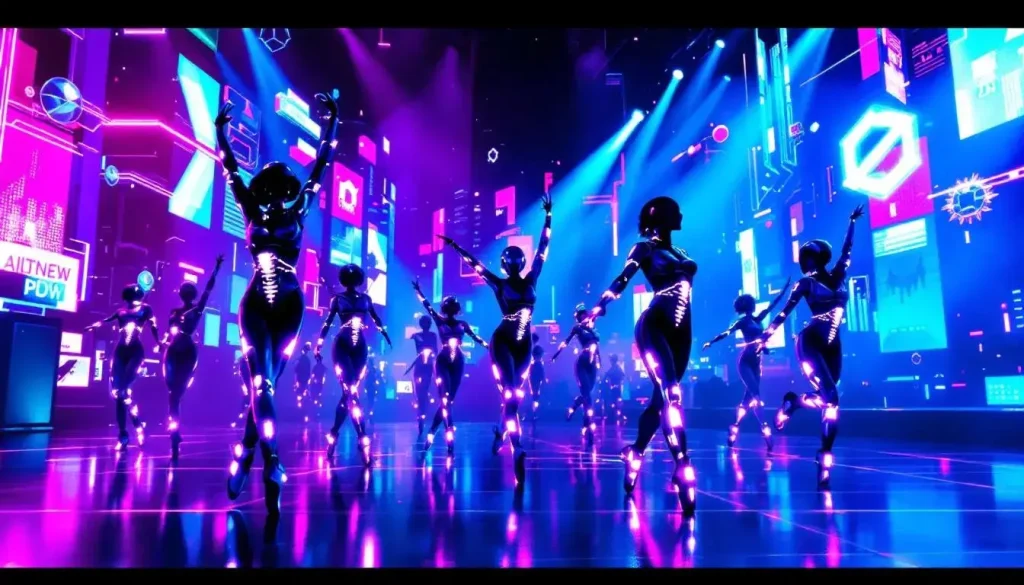
The dawn of AI ballet marks a pivotal moment in the history of dance, where technology and humanity come together in a symphony of movement and innovation. Choreographers and dancers are embracing AI technologies, exploring creative avenues that were previously unimaginable. This bold reimagining of ballet is not just about robots dancing; it’s about expanding artistic horizons and creating new movements that push the boundaries of human physicality. Futuristic choreography, such as robot dance sequences, exemplifies how technology is reshaping the art form.
One of the most striking examples of this integration is seen in projects like Valencia James’ AI_am, part of a curated program of innovative performances, where dancers interact with AI systems to generate unique and inspirational dance experiences.
These collaborations enable choreographers to create movements that surpass what the human body can achieve alone, resulting in electrifying choreography that captivates audiences and challenges traditional notions of entangled dance, where sparks fly. AI’s role in co-creating and innovating choreography is central, as it generates new ideas and facilitates unprecedented collaboration between technology and artists.
The possibilities for visually striking performances are endless. AI opens up new creative processes, enabling dancers to explore futuristic visuals and reimagine classic tales in innovative ways. The evolution of AI promises to revolutionize ballet by merging human creativity with technological precision and innovation. The world’s first AI-driven ballet projects are setting new standards for what is possible in dance, inspiring others to follow.
Human Emotions in AI Choreography
Although integrating AI into ballet might seem like a step into an artificial future, it brings a deeper connection. AI choreography can evoke very human emotions, adding depth and complexity to performances. As the role of the dancer evolves with the advent of AI, concerns arise about AI replacing traditional dancers.
At the same time, opportunities also emerge for AI to become a creative partner, augmenting human performance. Humor is often woven into AI ballet to engage audiences and add emotional depth, making complex themes more accessible. A prime example is the AI ballet Petrushka, which reimagines a classic tale with robots, exploring themes of love, jealousy, existential longing, and life’s journey as central to the narrative.
These emotions run deep, resonating with audiences and demonstrating that technology can indeed connect with humanity in profoundly meaningful ways. Dark Meadow Suite, a poetic work that celebrates the Martha Graham Dance Company’s Centennial, also explores life’s journey and human connection, aligning with the innovative spirit of AI ballet.
The EDGE model’s editability allows real-time refinement of dance movements, enhancing the creative process to capture the full spectrum of human desire and emotion, adding energy to the experience. This capability to tweak and perfect movements on the fly is a testament to the power of AI to amplify human creativity and emotional expression, while highlighting the unique value that humans bring to live performance.
However, this technological marvel comes with its own set of challenges. Artists must assert control over how their movements are used in AI training to protect their creative rights and preserve cultural knowledge. The dance world is keenly aware that while AI can enhance creativity, it must be integrated ethically, ensuring that human contributions are valued and not overshadowed by the technology. This reinvention asks for a careful balance between innovation and respect for artistic integrity.
Generative AI: A New Choreographic Tool
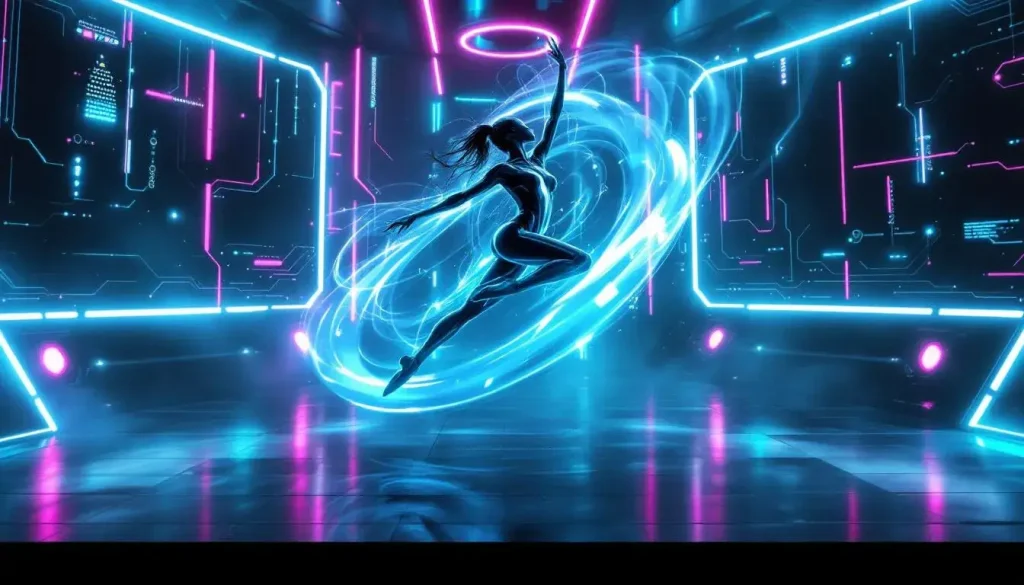
Generative AI is emerging as a groundbreaking tool for choreographers, offering new avenues for creative expression and engagement in movement. AI adds a new layer of depth to choreography by analyzing music and generating dance movements that align with its rhythm and emotional tone. This fusion of technology and artistic expression is not just about creating dance sequences; it’s about enhancing the emotional impact of performances.
The EDGE model exemplifies AI’s potential in choreography, allowing choreographers to visualize and refine 3D dance sequences in response to music, fostering experimentation with new movements for more dynamic performances. This iterative process, where choreographers can adjust specific movements and see the corresponding body motions, is a testament to the power of AI to enhance creativity.
Moreover, generative AI can mimic and execute complex dance moves, showing innovation potential even without human dancers. This capability opens up exciting possibilities for the future of dance, where AI-generated movements can be seamlessly integrated with human performances, creating a harmonious blend of technology and artistry.
Virtual Reality and Augmented Reality on Stage
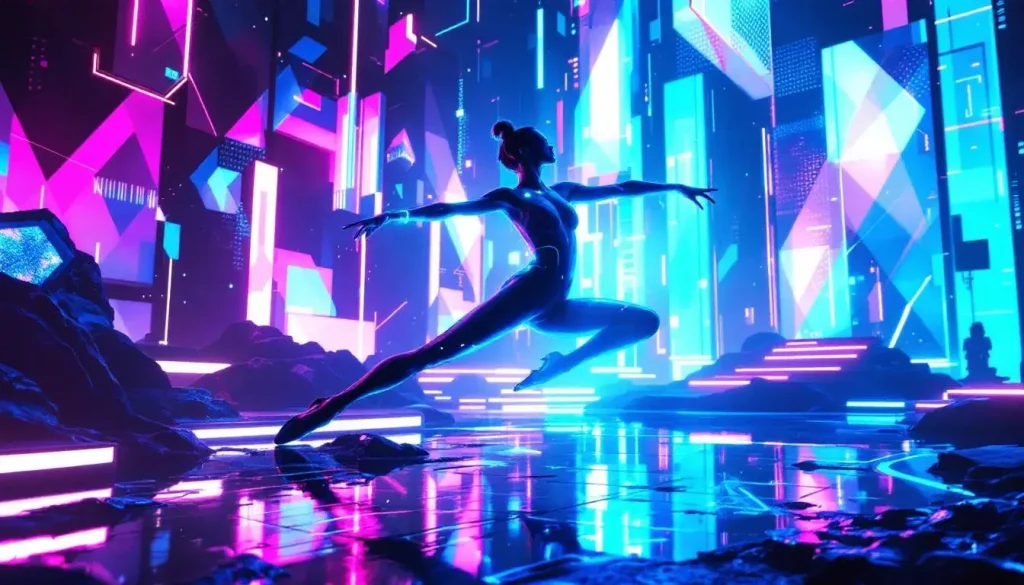
The integration of virtual reality (VR) and augmented reality (AR) in ballet performances is transforming stage design and audience engagement. These technologies create visually striking and immersive experiences that captivate audiences and transport them into high-tech future worlds. From projection technologies that make dynamic environments to tactile audio devices that enhance sound engagement, the modern dance world is becoming increasingly interactive and immersive.
Wayne McGregor’s innovative use of AR glasses in performances is a testament to the potential of these technologies. By providing real-time information and visual enhancements, AR glasses allow audiences to engage with the performance on a deeper level, creating a more immersive experience. This blend of technology and artistry is not just about adding futuristic visuals; it’s about enhancing the overall performance and making the audience feel more connected to the dance.
As VR and AR continue to evolve, they promise to revolutionize the dance world by creating new possibilities for stage design and audience interaction. The future of ballet is not just about the dancers on stage but also about the immersive experiences that these technologies can create, offering a glimpse into a high-tech future where technology and humanity coexist harmoniously.
Ethical Dilemmas in AI Ballet
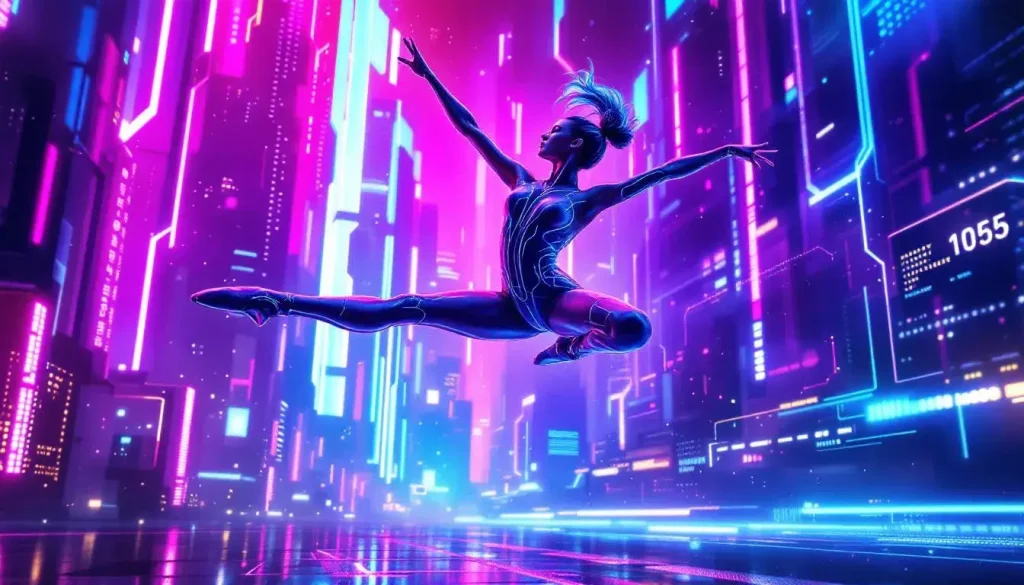
As AI becomes more integrated into ballet, it raises critical ethical dilemmas that the dance world must address. One of the primary concerns is the ownership and moral implications of AI-generated dance movements. The use of artists’ movement data without their knowledge or consent raises significant ethical concerns, particularly regarding representation, ownership, and the exploitation of human emotions.
The training of AI systems often involves data that may lack the consent of the original performers, leading to concerns about biases and the marginalization of diverse bodies and cultural expressions. These ethical dilemmas underscore the importance of ethical AI in dance, ensuring that technology enhances, rather than diminishes, human creativity and cultural heritage.
Choreographers like Wayne McGregor are actively collaborating with organizations such as Arts Council England to address these issues, focusing on intellectual property and the ethical use of AI in dance. By tackling these challenges head-on, the dance world can ensure that the integration of AI is done ethically and responsibly, preserving the artistry and emotional depth that define ballet.
Case Study: San Francisco Ballet’s AI Integration
The San Francisco Ballet’s integration of AI tools offers a fascinating case study in the real-world application of AI in dance. The artistic director at San Francisco Ballet plays a crucial role in overseeing the integration of AI and fostering innovation within the company. Wayne McGregor’s development of AISOMA, a choreographic tool, showcases the potential of AI to revolutionize ballet by:
- Analyzing past performances to provide real-time movement suggestions
- Allowing for varied and unique performances
- Making each show a distinct experience
Advances in the gaming industry have made motion capture technology more accessible, allowing dancers to explore new movements and refine performances. McGregor’s work with AISOMA showcases the exciting possibilities of integrating AI into traditional ballet, where technology enhances the creative process and enables dynamic, emotionally resonant performances.
This case study highlights the transformative impact of AI on ballet, demonstrating how technology can be seamlessly integrated into the art form to produce innovative and captivating performances. The San Francisco Ballet’s success with AI tools like AISOMA sets a precedent for other dance companies looking to explore the potential of AI in their work.
Audience Reactions and Future Expectations
Audience reactions to AI-enhanced ballet performances have been a mix of excitement and curiosity. Many viewers express enthusiasm about the innovative choreography and futuristic visuals that AI can bring, seeing it as a fresh perspective in the dance world. The introduction of augmented reality glasses in opera collaborations has further enhanced audience interaction, providing real-time information and visual enhancements that create a more immersive experience.
Modern audiences, accustomed to immersive technologies through cinema and gaming, are increasingly intrigued by the potential of AI in dance. The immediacy and connection that these technologies offer create sparks of excitement and open up new possibilities for audience engagement in life.
Looking to the future, expectations are high for more interactive performances that adapt to audience reactions in real-time. The dance world is on the brink of an exciting digital transformation, where AI and immersive technologies promise to create more dynamic, engaging, and emotionally resonant performances presented in the world’s dance scene.
Summary
The integration of AI in ballet is a bold and imaginative reworking of the art form, blending technology and human creativity in ways once unimaginable. From generating new movements to creating immersive performances, AI is revolutionizing the dance world and pushing the boundaries of what is possible.
As we look to the future, the possibilities for AI in ballet are endless. The dance world stands at the intersection of tradition and innovation, poised to explore new creative avenues and enhance the emotional depth of performances. The journey of AI in ballet is just beginning, and the dance between technology and humanity promises to be a captivating and inspiring one.
| Niche Area | AI Technology | Future Impact |
|---|---|---|
| AI-driven Choreography Co-Creation | AI-generated scripts and real-time choreographic suggestions (Lilith.Aeon, AISOMA) | Enables dynamic, audience-responsive performances and novel creative collaborations. |
| AI-Powered Performance Analysis | Motion capture with AI feedback and personalized training programs | Improves technique precision and accelerates skill development through data-driven insights. |
| Predictive Biomechanical Modeling | Smart wearables and medical image–based algorithms for injury prediction (smart toe pads, ankle bands) | Proactively identifies injury risks, extending dancer longevity, and reducing downtime. |
| Virtual AI Avatars & Immersive Experiences | AI-generated digital dancers and VR/AR platforms for interactive and remote performances | Expands access to ballet, creating hybrid live-virtual shows and new revenue streams. |

